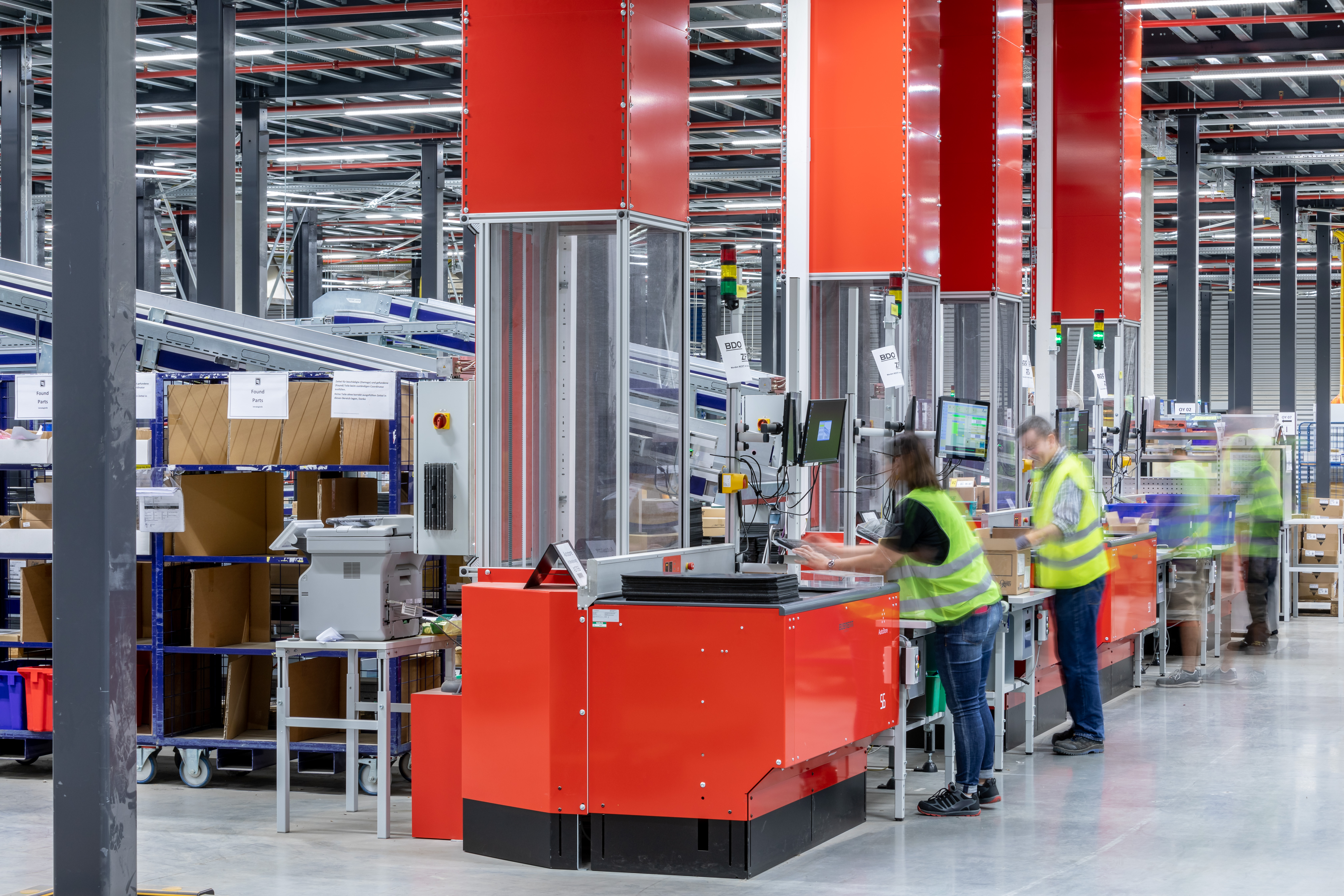Optimising warehouse inventory accuracy: 5 essential tips
Warehouse inventory accuracy is a critical factor in the success of any warehouse operation. It directly impacts productivity, customer satisfaction, and profitability. Poor inventory accuracy can lead to a cascade of issues like stockouts, overstocking, accounting discrepancies, and ultimately, customer dissatisfaction.

Achieving and maintaining precise inventory records is crucial for efficient warehouse operations and a well-oiled supply chain.
What is warehouse inventory accuracy?
Warehouse inventory accuracy refers to how closely the physical inventory matches the recorded inventory data in your management systems. It measures the difference between the actual stock levels on your warehouse shelves and what is shown in your inventory records.
High inventory accuracy ensures that the right products are available to fulfil orders accurately and on time, every time.
Why is warehouse inventory accuracy so important?
The importance of inventory accuracy in the warehouse cannot be overstated. Precise inventory records are essential for several key reasons.
First, it prevents incorrect orders from being shipped due to stock shortages or overages. This eliminates disruptions, delays, and unhappy customers receiving the wrong items. Accurate inventory also reduces operational costs by avoiding overstocking, which minimises inventory carrying costs like storage and insurance.
Additionally, it minimises inventory shrinkage, write-offs, and potential losses due to missing stock. With accurate records, you can identify and address any inventory discrepancies promptly. Proper inventory accuracy ensures your inventory valuation is correct for accounting and tax purposes, avoiding costly discrepancies.
Furthermore, it enables effective inventory planning, forecasting, and purchasing decisions based on reliable data. You can optimise stock levels, avoid excess ordering, and make informed decisions about replenishing inventory. Accurate inventory also improves overall supply chain visibility and coordination with suppliers and partners.
Perhaps most crucially, high inventory accuracy enhances customer satisfaction by ensuring orders are fulfilled accurately and on time, every time. In today’s competitive landscape, meeting customer expectations is paramount for success and retention.
Five tips for improving inventory accuracy in the warehouse
Maintaining inventory accuracy is an ongoing challenge, but implementing the right processes and leveraging technology can significantly improve your accuracy levels.
Here are five essential tips:
1. Implement cycle counting
Rather than relying on a single, disruptive annual physical inventory count, implement a cycle counting program. Cycle counting involves conducting regular counts on a portion of your inventory each day or week, prioritising high-value, fast-moving, and problematic items more frequently. This approach provides continuous inventory verification without disrupting operations.
2. Optimise warehouse layout
Warehouse layout optimisation is essential for maintaining inventory accuracy. Designate clear zones, aisles, and pick locations within the warehouse, and implement uniform labelling standards for bins, shelves, and locations. Proper layout and organisation prevent misplacement and lost inventory, ensuring that every item has a dedicated, easily identifiable home.
3. Optimise receiving processes
Many inventory accuracy issues can be traced back to the receiving process. Thoroughly inspect incoming shipments against documentation, immediately label and scan received items into your warehouse management system (WMS), and identify and resolve any discrepancies upfront before putaway. This proactive approach nips potential inaccuracies in the bud.
4. Utilise automated storage and retrieval systems (ASRS)
Implementing an automated storage and retrieval system (ASRS) like AutoStore can significantly improve inventory accuracy in the warehouse. ASRS eliminate the potential for human error during put-away and picking processes.
AutoStore, in particular, operates in a contained grid system, preventing misplacement errors. Inventory can tracked and managed in real-time with specialised AutoStore software like Element Logic’s eManager, maximising space utilisation and stock organisation. Automated robotic handling also minimises product damage and inventory loss.
5. Train staff and ensure accountability
While technology plays a crucial role, your warehouse staff are the backbone of inventory accuracy efforts. Provide ongoing training on inventory management standard operating procedures (SOPs) and foster a culture that values inventory accuracy across all teams. Conduct regular audits, analyse root causes of discrepancies, and implement corrective actions to continuously improve processes.
Challenges in maintaining warehouse inventory accuracy
Despite its importance, maintaining warehouse inventory accuracy can be a challenging endeavour. Some common hurdles include high transaction volumes and fast-moving inventory, multiple sales channels (online, in-store, marketplaces) requiring multichannel inventory management, and a lack of integrated, robust inventory management systems.
Human errors during manual counting and data entry processes are also a persistent challenge. Handling product variations like sizes, colours, and bundles while ensuring lot traceability adds complexity. Finally, physical space constraints can limit the ability to maintain an organised warehouse layout conducive to inventory accuracy.
How AutoStore contributes to improved inventory accuracy
As mentioned earlier, AutoStore is an innovative automated storage and retrieval system that can significantly enhance inventory accuracy within the warehouse environment. Here’s are a few key reasons why:
- AutoStore robots operate in a contained grid system, eliminating the possibility of misplacement errors.
- Inventory is tracked and managed in real-time within AutoStore software, providing up-to-the-minute stock levels.
- High-density storage maximises space utilisation and enables optimal stock organisation.
- Robotic handling minimises product damage and inventory loss due to mishandling.
- Seamless system integration provides real-time inventory updates across the entire supply chain.
- Automated processes reduce the potential for human errors during storage and picking operations.
Accurate warehouse inventory, profitable operations
Maintaining precise inventory records is essential for optimising warehouse efficiency, controlling costs, and delivering exceptional customer service. By implementing best practices like cycle counting, optimising warehouse layout and receiving processes, leveraging technology solutions like AutoStore, and fostering an inventory-conscious culture, businesses can achieve high levels of inventory accuracy.
Accurate inventory data enables leaner operations, informed decision-making, and a competitive edge in meeting customer needs. It’s a crucial foundation for a well-oiled supply chain and a key driver of profitability and growth.
Are inaccurate inventory levels impacting your warehouse productivity and profitability?
Speak to our experts about implementing the cutting-edge AutoStore system to streamline your inventory management and unlock new levels of efficiency.



